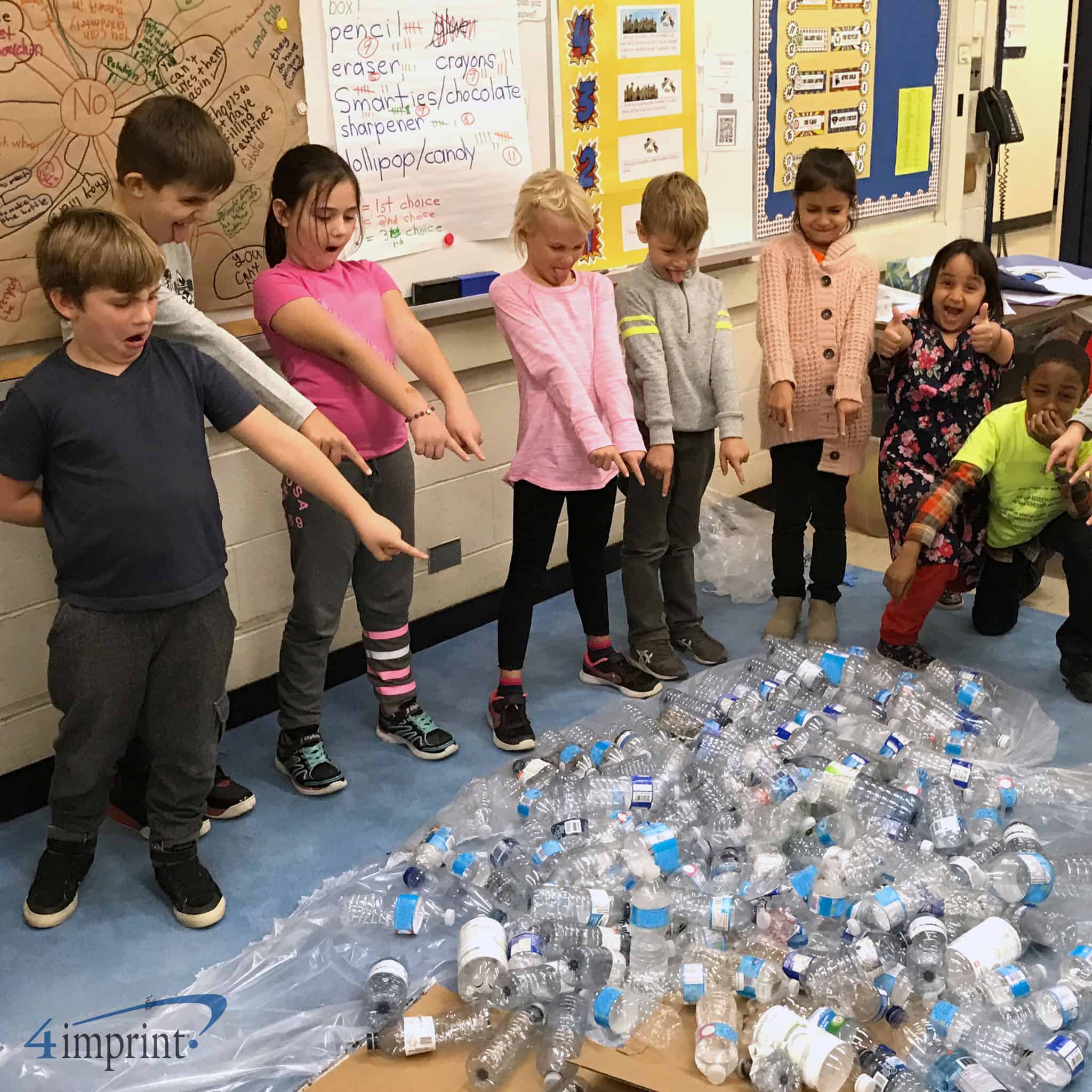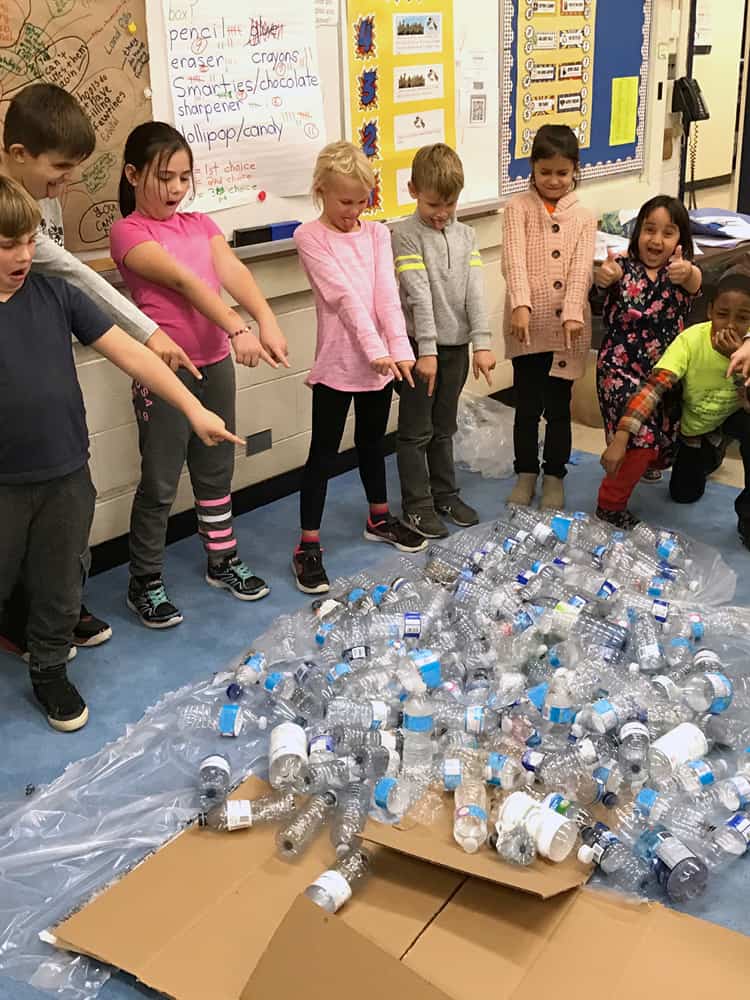
Thirsting for Change
Students at Burnhamthorpe Public School in Mississauga, Ontario, are getting a lot more than standard lessons in reading, writing and arithmetic. They’re learning how to change the world, one water bottle at a time.
A Lesson in Communication Skills
Second-grade teacher Kyle Pitman asked his students, “Are plastic disposable water bottles a good thing or a bad thing to bring to school?” The question was designed to help students develop critical thinking and communication skills, but it quickly became a student-led learning opportunity. Debate ensued within the second-grade class. Soon, the help of fifth-grade students was needed for research and complex calculations. Weeks later, wiser about the complex issues surrounding Earth’s water supply, students began to change the way water is used at their school. They’re also working to educate others and raise money for water projects in Africa, where schoolchildren don’t have access to clean drinking water.
“Originally I was just hoping to get better communications skills out of them,” Pitman said. “Not once did I ever consider the fact that we might be funding a social media campaign, building a website … making a difference in a continent that no one in our class has ever been to.”
“It’s completely exceeded every expectation that we have had.”
—Kyle Pitman
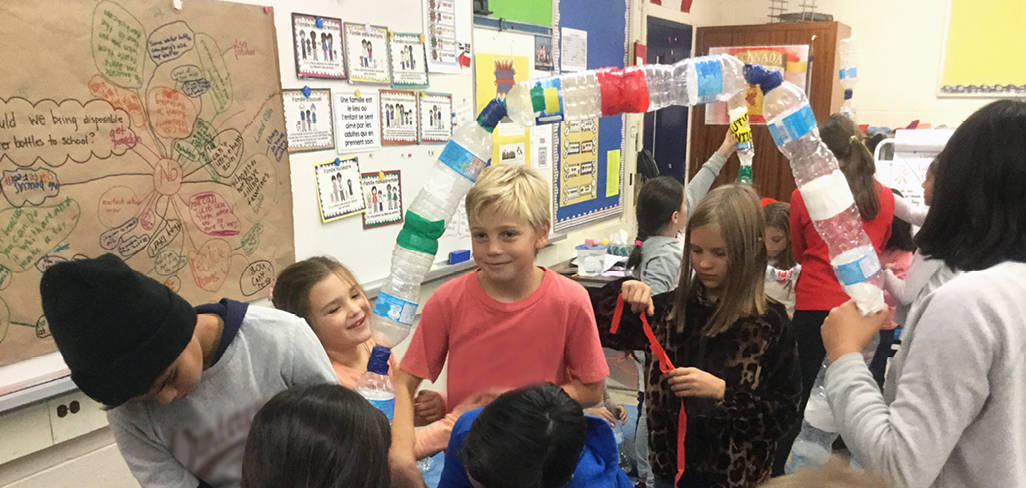
A Lesson in Student-led Learning
The students made the lesson a success by leading the way, according to Pitman and fifth-grade teacher Sarah Emmett. Students watched The Story of Bottled Water and followed the life cycle of a water bottle. They learned about the natural resources needed to manufacture water bottles. Industry data shows roughly one in three water bottles is recycled, and water bottles that end up in the trash may be shipped to other countries for disposal or incinerated.
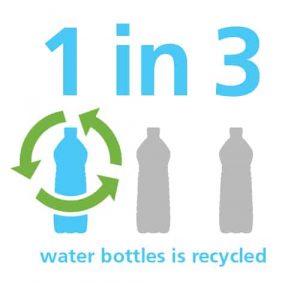
The students wanted to know more, specifically, about how plastic bottles are used in their school. So, they put on some gloves and dug through the school’s recycling bins, garbage bins and desks. They found 198 plastic disposable water bottles.
“They were shocked. But the impact of that didn’t really hit them until we said, ‘Well, this is just one day,’” Pitman said.
“That was the first time I was really excited with the project,” Emmett said, “because my grade fives had to start explaining counting and multiplication to the grade twos, and they figured out we were using 40,000 bottles a year. And they were blown away.”
A Lesson in Change
The students became even more committed to addressing the problem after a presentation by David Bone from the Board of Directors for Cloth and Water, a non-profit organization that funds water projects. In that presentation, students learned how children their age in Africa often have no access to water during the school day. The realization hit close to home, and the students felt compelled to act. They saw an opportunity: sell reusable water bottles to raise funds for a water bottle filling station (standard drinking fountains don’t easily fill water bottles) and for water projects for schoolchildren who are less fortunate. Their goal is to replace every disposable water bottle in their school with a reusable one.
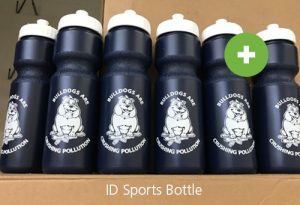
Reusable bottles help save waste! Shop ID Sports Bottle
Students developed a list of water bottle requirements, researched vendors, developed a business plan and requested a loan from the parent council. The parent council was so impressed by the initiative, they gifted the money instead. Students used that money to purchase 600 ID Sports Bottles. With 687 kids in the school, the students are hoping to sell all of the bottles, which cost $4 for the first purchase and $3 each after that. Proceeds have been earmarked for the filling station and for schoolchildren in Africa, via Drop in the Bucket.
A Lesson in Applied Learning
A question to prompt critical thinking and communication skills development morphed into lessons on business management, economics, mathematics, global water issues, ecology, marketing and more. Through it all, the students remained passionate, even excited, about their schoolwork. Emmett says, “Maybe three or four days into the project the kids asked me when we were going to start doing math again. And they totally didn’t even realize that this water bottle challenge that we’d been working on was anything related to academics. So it was really cool to see them applying so much of their knowledge without even knowing it.”
A simple discussion question has turned into a project that has exceeded everyone’s expectations. “I think that’s been a really valuable lesson for us because sometimes when we plan things as teachers, we put a lid on where we think it can go,” Pitman said.
“And this particular thing has just blown the doors open for us in terms of what these kids are actually capable of and what we can do with them moving forward.”


